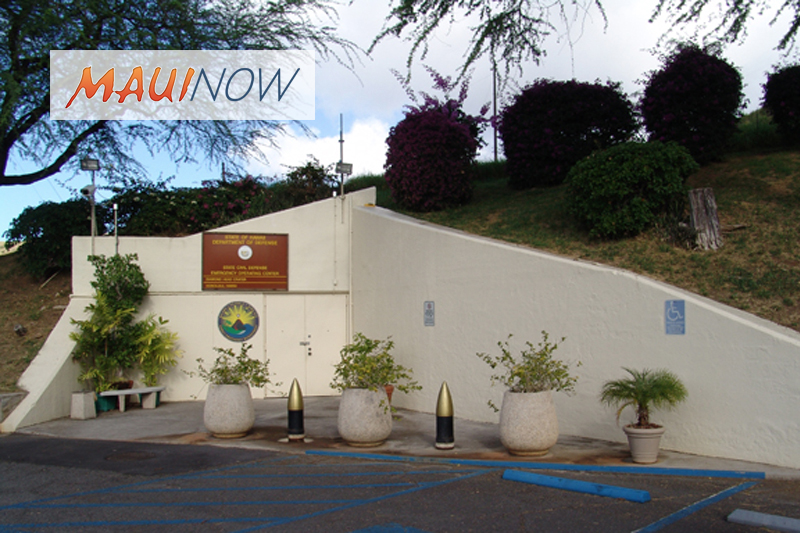North Korea ICBM Test Represents “New Escalation”
The US has acknowledged North Korea’s test of an intercontinental ballistic missile after the country claimed it successfully test-launched its first ICBM this week.
Secretary of State Rex Tillerson on Tuesday condemned the test saying it “represents a new escalation of the threat to the United States, our allies and partners, the region, and the world.”
Tillerson said the US intends to bring North Korea’s action before the UN Security Council and enact stronger measures to hold the Democratic People’s Republic of Korea (DPRK) accountable.
He said the US has made it clear that it will never accept a nuclear-armed North Korea.
Meantime, David Wright, of the Union of Concerned Scientists, said in a blog post that based on its reported range, the missile would not be able to reach the lower 48 states or the larger islands of Hawaiʻi, but would have the capabilities of reaching Alaska.
Hawaiʻi is 4,661 miles from North Korea while Alaska is an estimated 3,552 miles away. Wright who received his PhD in physics from Cornell University in 1983 and whose area of expertise includes ballistic missile defense, estimates that if reports are correct, the “same missile could reach a maximum range of roughly 4,160 miles on a standard trajectory.”
In a statement issued on Tuesday, Tillerson said, “Global action is required to stop a global threat. Any country that hosts North Korean guest workers, provides any economic or military benefits, or fails to fully implement UN Security Council resolutions is aiding and abetting a dangerous regime. All nations should publicly demonstrate to North Korea that there are consequences to their pursuit of nuclear weapons.”
Tillerson said the President and his national security team are continuing to assess the situation in close coordination with allies and partners.

Hawaiʻi Emergency Management Agency building at Leahi (Diamond Head). Courtesy photo.
In April of this year, officials with the State Emergency Management Agency said the threat of North Korea actually firing a nuclear missile at Hawaiʻi is extremely small; but “yet with the unpredictable leadership of North Korea, Hawaiʻi needs to take steps to prepare just in case.”
Military experts estimate a missile from North Korea would take between 12-20 minutes to reach Hawaiʻi.
NBC News compiled an article around the same time, providing the public with a guideline on what to do in the case of a nuclear attack to escape radioactive fallout. The publication states that “sheltering in place, beneath as many layers of protection as possible, is the best way to avoid the radiation that would follow a nuclear detonation.”
The federal government’s Ready.org website also has a list of guidelines on what to do before, during and after a nuclear blast, providing simple steps to protect life.
Rep. Tulsi Gabbard (HI-02) released the following statement today after North Korea’s recent successful Intercontinental Ballistic Missile test:
“North Korea’s latest successful intercontinental ballistic missile test further demonstrates the extremely dangerous and growing threat that North Korea poses to Hawaiʻi, Alaska, and the mainland United States. For the past fifteen years, our leaders have let the people of Hawaiʻi and our country down, allowing the situation in North Korea to worsen to this point of crisis where we are left with nothing but bad options. We must ensure we are able to defend against North Korea’s threat with cutting-edge missile defense technologies, but this is not enough. We must pursue serious diplomatic efforts to de-escalate and ultimately denuclearize North Korea. However, US leaders need to understand that Kim Jong Un maintains a tight grip on North Korea’s nuclear weapons as a deterrent against regime change. The Trump Administration would be far more credible in finding a diplomatic solution with North Korea if we weren’t currently waging a regime change war in Syria, and contemplating a regime change war in Iran.
“The North Korean regime witnessed the regime change wars the US led in Libya and Iraq and what we’re now doing in Syria, and fear they will become like Gadhafi who, after giving up his nuclear weapons program, was deposed by the United States.
“As long as the US is waging regime change wars, we are far less likely to reach a diplomatic solution in North Korea because they have no reason to believe our promises. In fact, we are far more likely to see nuclear proliferation by countries like North Korea who see nuclear weapons as their only deterrent against regime change.
“Serious diplomacy on the Korean Peninsula will require an end to our regime change war in Syria and a public statement that the US will not engage in regime change wars and nation-building overseas, including in Iran and North Korea. We should focus our limited resources on rebuilding our own country and seriously commit ourselves to de-escalating this dangerous stand-off with North Korea and negotiate a peaceful diplomatic solution.”










